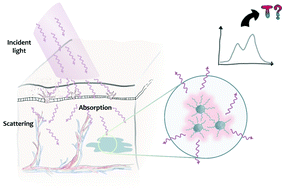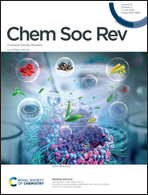Challenges for optical nanothermometry in biological environments
Abstract
Temperature monitoring is useful in medical diagnosis, and essential during hyperthermia treatments to avoid undesired cytotoxic effects. Aiming to control heating doses, different temperature monitoring strategies have been developed, largely based on luminescent materials, a.k.a. nanothermometers. However, for such nanothermometers to work, both excitation and emission light beams must travel through tissue, making its optical properties a relevant aspect to be considered during the measurements. In complex tissues, heterogeneity, and real-time alterations as a result of therapeutic treatment may have an effect on light-tissue interaction, hindering accuracy in the thermal reading. In this Tutorial Review we discuss various methods in which nanothermometers can be used for temperature sensing within heterogeneous environments. We discuss recent developments in optical (nano)thermometry, focusing on the incorporation of luminescent nanoparticles into complex in vitro and in vivo models. Methods formulated to avoid thermal misreading are also discussed, considering their respective advantages and drawbacks.

- This article is part of the themed collection: Nanoscale Spectroscopy


 Please wait while we load your content...
Please wait while we load your content...